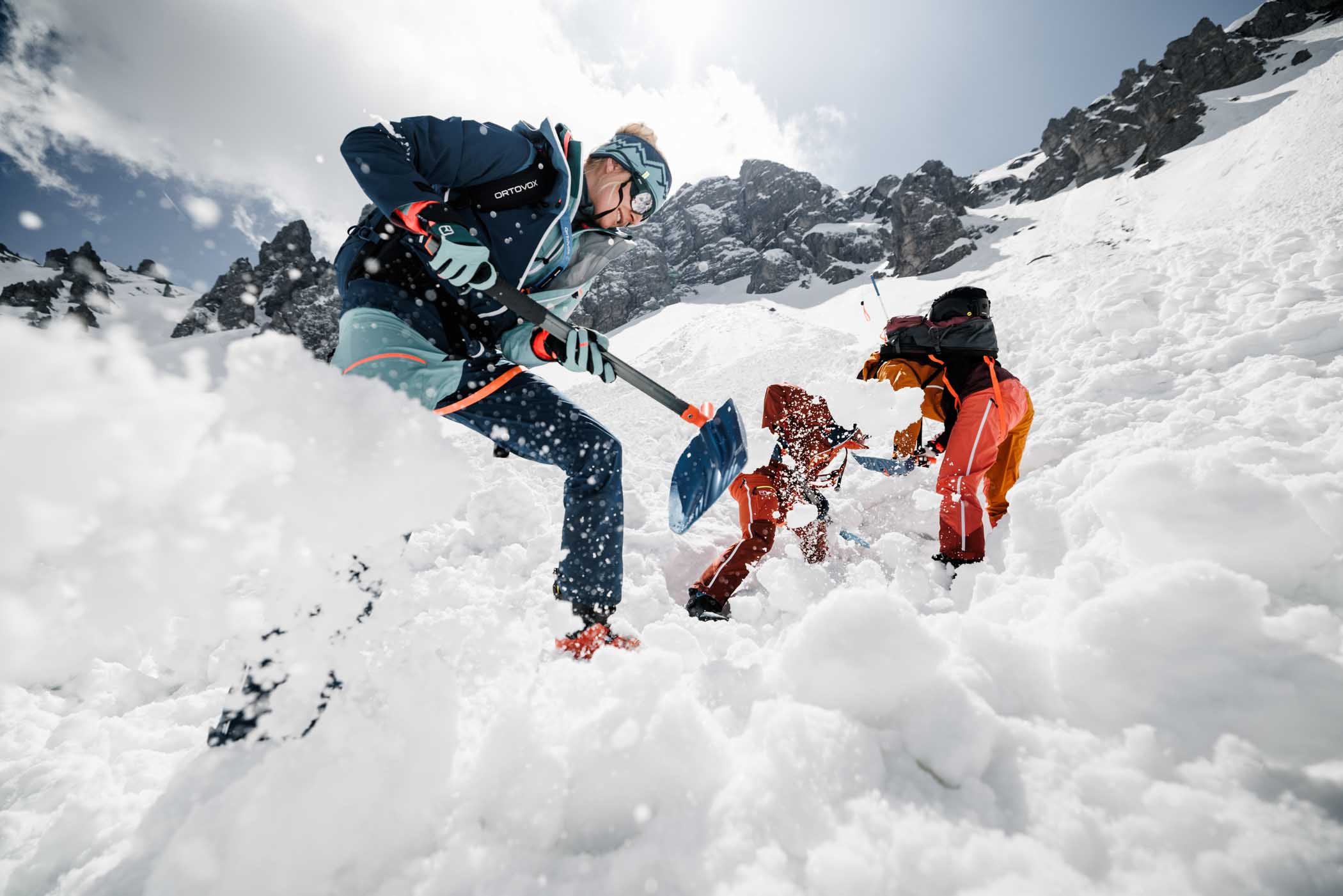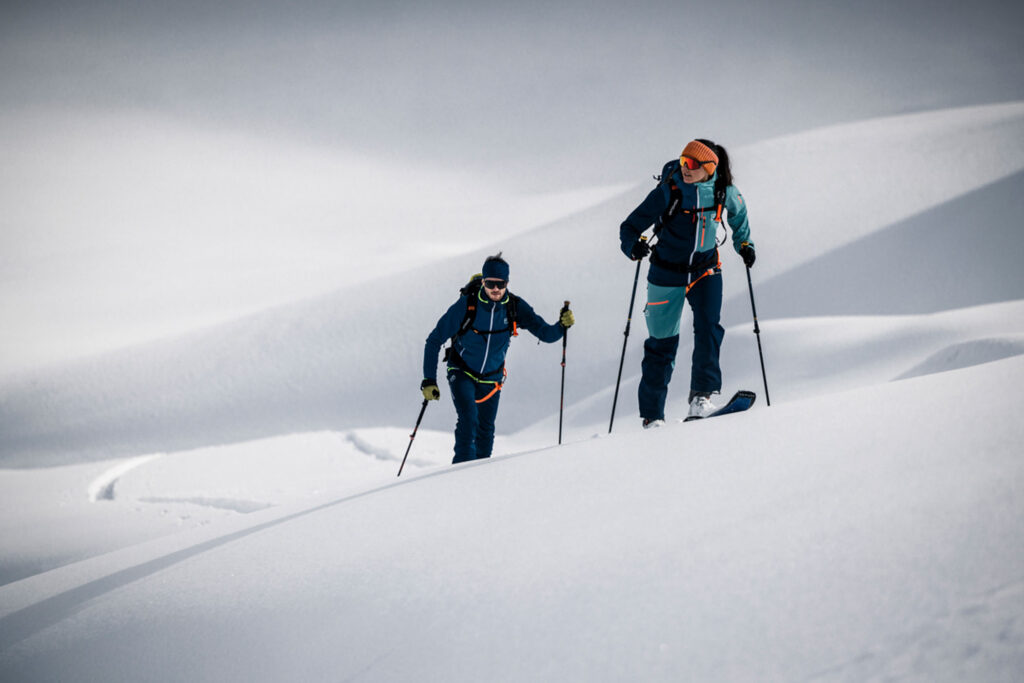Ortovox tech talk


Al Morgan: Hi Sam, ace to catch up. You’ve been looking after Ortovox in the UK for a long time. What’s the best thing about working with them?
Sam Noble: I’ve been working with Ortovox for over 15 years, and it’s a similar story with many of their partners in other countries, and their internal staff. It feels like we all help each other rather than it just being about sales. Ortovox’s goal is to protect the mountains and mountaineers. They really do care for all mountain sports enthusiasts, and the mountains we all love.
All of the clothes and backpacks Ortovox makes are PFC-free and their whole collection is climate neutral. They do all they can to reduce any environmental impacts, but there are always some you cannot eliminate with manufacturing. Therefore, Ortovox does use some offsetting to cater for this.
On the human side, they very much look after their suppliers. For example, for wool sourcing Ortovox select only a few providers, meaning they can ensure quality and consistency, but also a fair price for those suppliers.
This approach to protecting our special places and valuing the people we work with is not new, as it’s been ingrained in the way Ortovox thinks since the company first started.
I’ve still got the very first transceivers I owned, an Ortovox F1 and M1, and regularly use a Diract Voice. I know Ortovox makes excellent kit. We do need to talk about the LiTRIC avalanche airbags though. Last season they were launched but Ortovox recalled them. They are mightily impressive packs, so can you tell us a little about the recall?
Ortovox developed the LiTRIC system in a collaboration with Arc’teryx, and there’s a cover to stop anything getting sucked into the fan when the bag is inflating. They’ve made some minor amends to this cover to ensure nothing can get through at all. If you look at the new bags, which have the updated cover, you can’t actually notice any difference. They had spent a lot of time developing this new system for last season and had a big push promoting it. However, Ortovox continually tests and re-evaluates safety kit, and the other items they make, and they didn’t want to accept any risk, no matter how small, so paused the launch to ensure total safety.
A few bags had been shipped to stores, but they got these all back and have applied the updated cover, so no bags were scrapped.
We’re really excited that customer get to use them now. They’re superbly light so you can have added safety without a massive weight penalty.
It feels like Ortovox is one of, if not the most popular brand of regular backpacks for freeride skiers. You already have a massive range, so how come there’s a new Ravine collection for this season?
Ortovox is always looking at their ranges and the consumer thy can serve. The Free Rider has been in the backpack range for a long time, but they saw the need for a lighter weight freeride pack that facilitates quick ups and downs. It has a quick-fix ski-fastening strap, so you don’t even need to take the bag off to attach or remove your skis. The freeride fit has a wider waist belt than some of Ortovox’s other packs, and there’s a pocket to install their optional Clasp Spine Protector.
The Ravine packs are essentially a freeride fit but with ski touring features. The Cross Rider all-mountain packs are still the biggest seller, and it’s amazing how often you them in non-ski settings.

Often people focus on the basic trio of transceiver, shovel and probe. First-aid kits and other emergency equipment are often neglected. What’s your best-selling piece of emergency equipment?
The rescue sets, which include a transceiver, shovel and probe, are still our best-selling bit of kit for those new to off-piste adventures. If you’ve already got the obligatory three, we see a lot of people going for the mini waterproof first-aid kit. It’s so compact and light you can keep it in your pack all the time, not just when you’re heading out for a big tour.
Ortovox also puts a lot of effort into helping their customers have the best time in the mountains. They started the Safety Academy over 10 years ago, if I remember rightly. This was about helping educate skiers about safety in the mountains. This was online and in little booklets, and was a great way to further enhance enjoyment of the mountains.
Next, they introduced a similar idea for climbers, again helping to educate. All of the training can be accessed online and is free, with a safety lab for ice, rock and snow; take your pick. They now have the Protact Academy, too. Here there’s a lot of info around the topic of sustainability, including ways the public can reduce the impact they have, related to their time in the mountains.
I reckon that over 10% of my ski buddies own, or have owned, the Guardian outerwear from Ortovox. It works so well with its innovative merino lining. What’s stand-out for you this season?
The Guardian shell was the piece that launched Ortovox into outerwear over 10 years ago. It has undergone some updates and is still popular, but it’s not the one I use. I ride in the Deep Shell Jacket and Bib Pant. It has a lot less merino in the lining than the Guardian, and is a little lighter. For me, it means I can use it all season long and, as a snowboarder, the bibs are superb.
Merino wool has a very low micron count, which means it’s fine and that’s why it works well next to the skin, and Ortovox uses it in some the linings of the jackets and pants. The Ortovox insulated pieces use Swiss wool for the insulation. This wool is not merino, and isn’t suitable to be made into yarn. Instead, they make a felt out of it and this is used rather than the wadding used in synthetically insulated garments.
Ortovox were the first to use Swiss wool: it’s sustainable, natural, gives superb warmth, even when wet, and, similar to merino, it’s odour resistant. Ortovox also uses wool for the insulating layer in their technical gloves. The wool used is the off-cuts from manufacturing their other clothing.
I used to climb a lot, and old-school wool mittens saved me from cold damage on more than one occasion. In this age of techy fabrics, it’s amazing they still exist. Why should they be on the kit list?
These gloves amaze me. I did a winter season in 1999, and a girl from Scotland used that type of glove all season and I thought she was bonkers. Roll forward a couple of decades and I can’t believe how effective they are.
The Classic Wool mitt and gloves Ortovox makes can get caked in snow and your hands are still warm inside. Time-tested kit can be incredible.
What does the future hold?
I’ve just come back from the head office, close to Munich, and we’ve been looking at the kit that won’t be available to customers for a season or more. Ortovox has supplied clothing, in team colours, to several rescue teams in Austria and Germany. They’ve now gone further, developing a line of baselayers, mids, outerwear and backpacks specifically for use by rescue teams. It’s exciting to see some of the kit they’re developing.